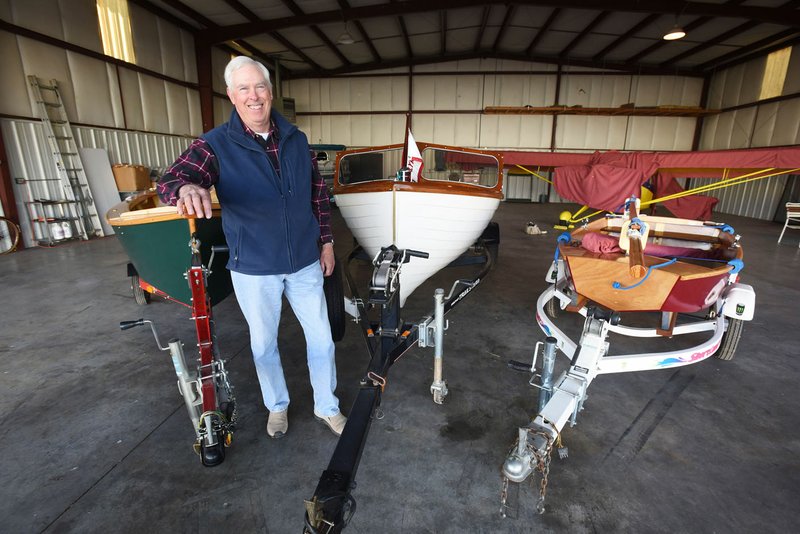Don't look for Warren Wilkey's art inside a wooden frame. His masterpieces are built of wood and skip across the waves at Beaver Lake.
Wilkey's studio is a sawdust-scented workshop next to his home south of Garfield. It's here that Wilkey builds wooden sailboats and pleasure craft for fishing and cruising. The craftsman hews new life into old boats by restoring them.
Two sailboats he's finished are beautiful with graceful, sweeping lines. Wood grain shows beneath a smooth finish, which reflects light while the boats rest on their trailers. They're small day sailers that dance over Beaver Lake with Wilkey's hand on the tiller.
A wooden Lyman cruising boat he's restored could be on display in any maritime museum. The Lyman is a classic wooden boat from the 1950s, an affordable boat designed for skippers of modest means.
"The Lyman was the Ford or Chevy of wooden boats. It's not real high end. It's an everyday, working man's boat," Wilkey said.
It's powered by a 1950s era Mercury outboard. An oddity is that passengers sit in the front seat and the skipper steers from the rear seat.
The practical Lymans have a soft spot in his handyman heart, so much that restoring another Lyman is Wilkey's current project.
He just finished building a McKenzie drift boat designed for river floating. Current and oars move the boat, which Wilkey plans to use for trout fishing the Ozarks' tailwater streams.
There's just something about wood.
"Wooden boats have a different feel to them," he said. "They just feel different in the water than other boats."
Wilkey has always enjoyed woodworking and likes the process of building a boat more than using it. He likes the different colors and nuances of various woods, and finishing his vessels to a high degree of detail.
Wilkey isn't shy about putting them in the water. In fact, one of his of his sailboats capsized during an outing on Beaver Lake. Wilkey had to swim the boat to shore and get it upright, which was no easy task.
A wooden boat demands extra care compared to fiberglass or aluminum.
"Wood boats, you have to maintain them. You can't store them outside. But if you maintain a wooden boat, it'll last for years," he said.
Admiring the craftsman's functional sailing art may stoke a handyman's urge to give boat building a try. For people with limited carpentry skills or tools, Wilkey recommends building a boat from a kit. Kit boats come with all the lumber pre-cut and step-by-step instructions.
"So basically what you do is assemble the pieces," he said.
Wilkey's advice for building a boat from scratch is to use high quality marine plywood.
"If you're going to invest all that time into building a boat, you want it to hold up," he said.
No telling how many hours Wilkey puts into a boat project. He doesn't keep track of the time spent, "nor do I track the cost."
He spent three or four hours at a time in his workshop to build the drift boat that he started in January and finished in April.
Volumes of books and articles about building wooden boats are available. A computer search reveals videos that teach every aspect of wooden boat building.
The real satisfaction is sailing a boat you built yourself, Wilkey said.
Flip Putthoff can be reached at [email protected]
Sports on 05/15/2018

